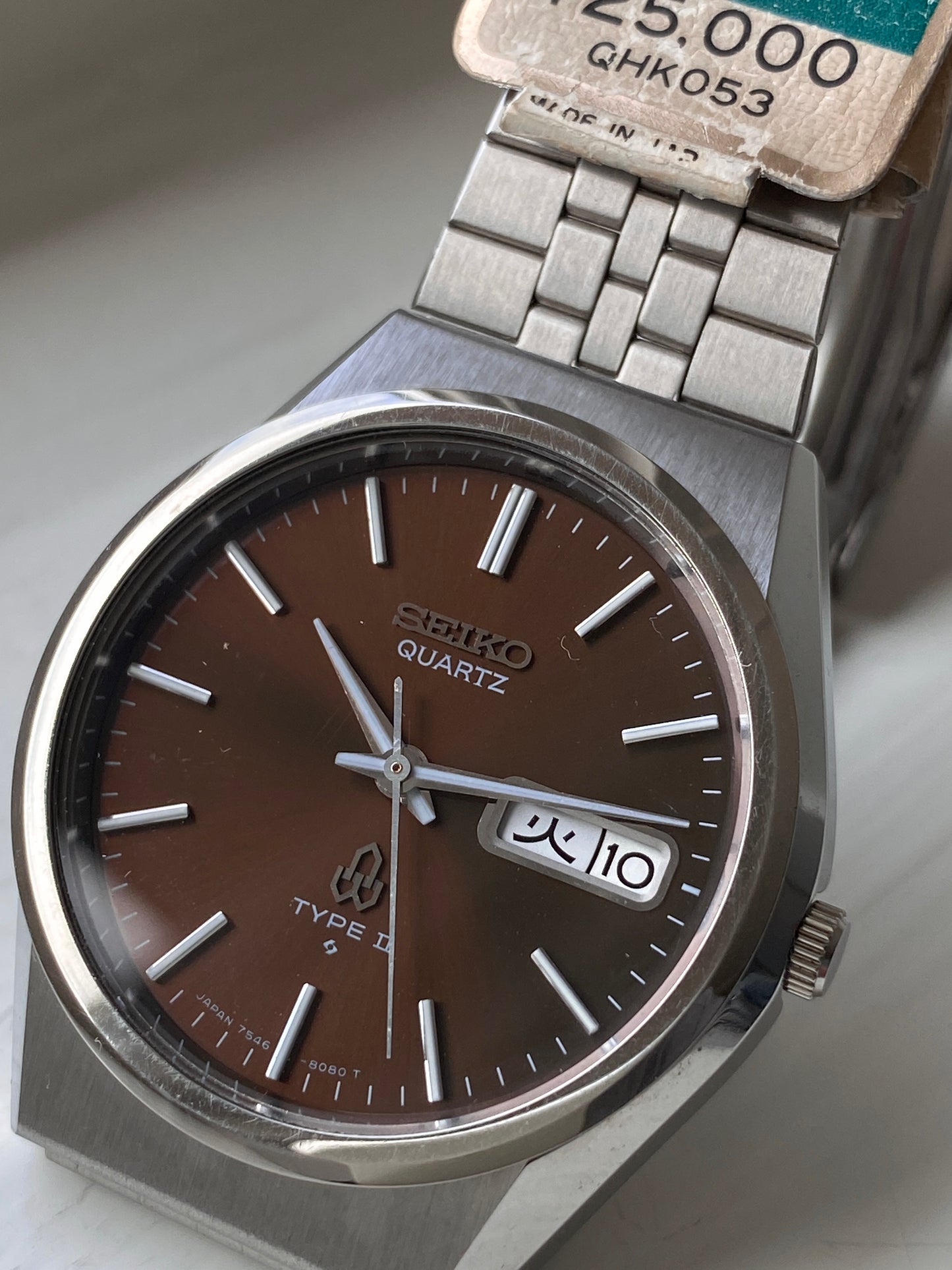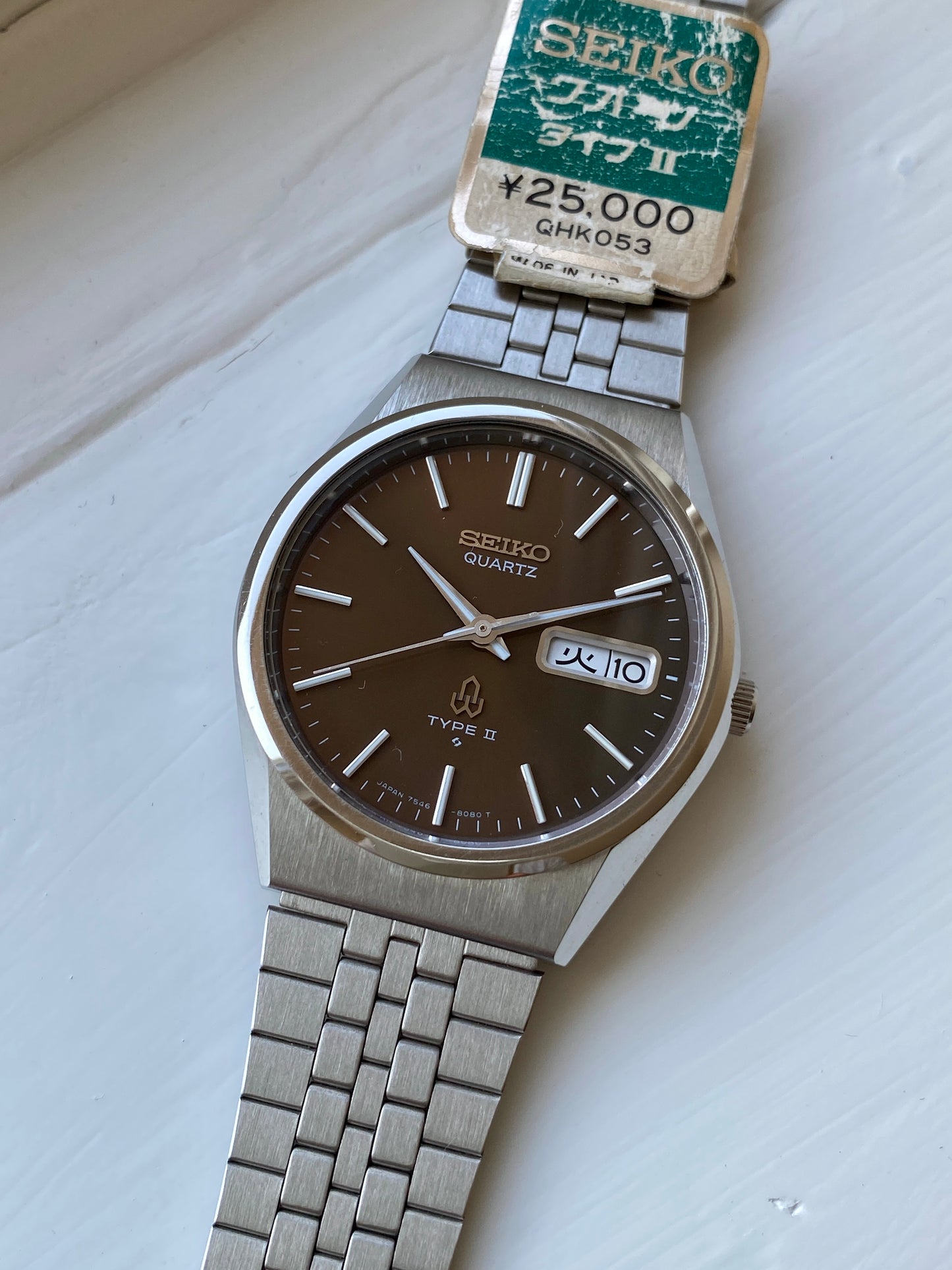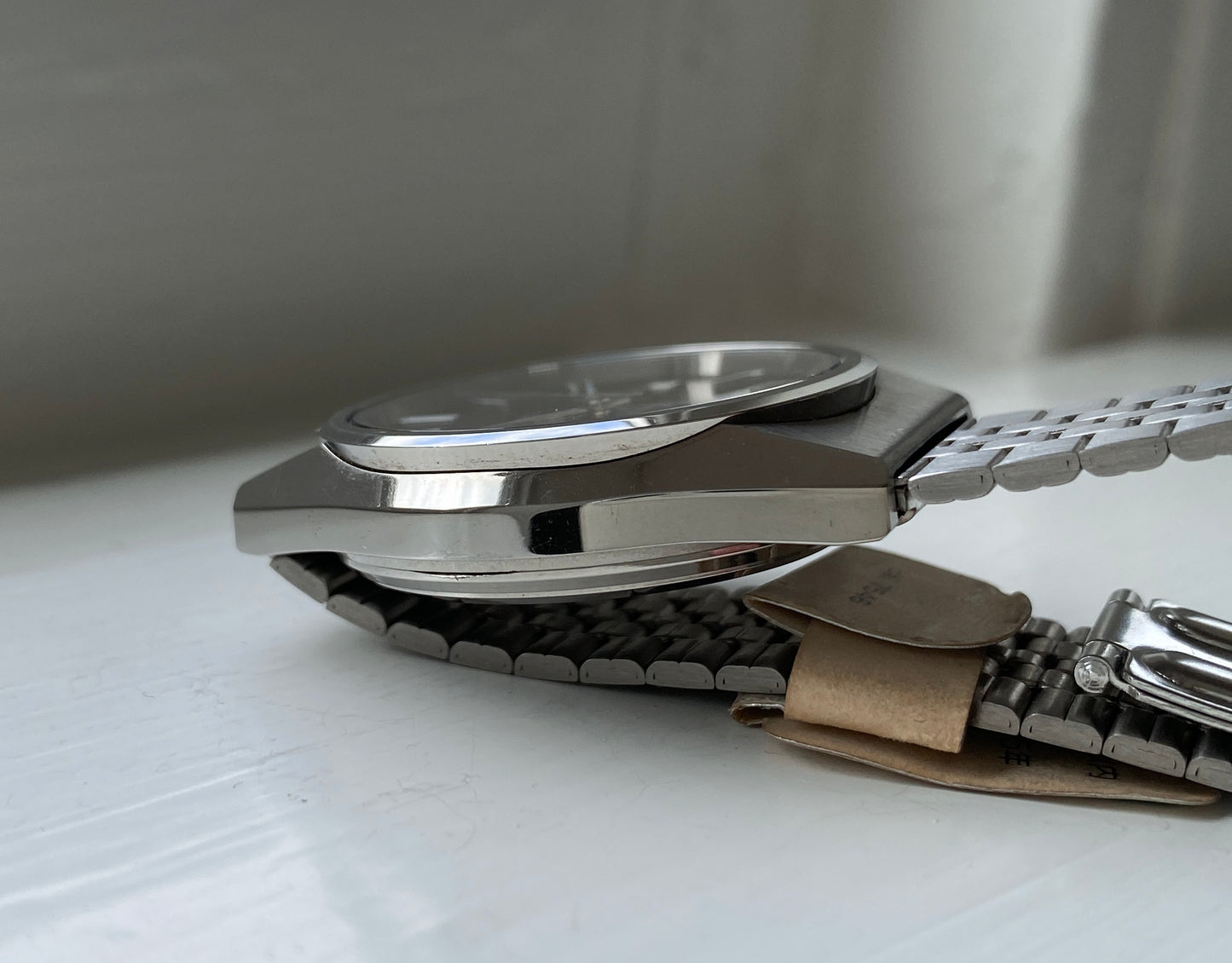Seiko Type II 7546-8070 NOS
Seiko Type II 7546-8070 NOS
Couldn't load pickup availability
|
Brand |
Seiko |
|
Model |
Type II |
|
Reference |
7546-8070 |
|
Year |
1978 - July |
|
Movement |
Quartz |
|
Extras |
NOS condition |
|
Dial |
Chocolate brown sunburst |
|
Jewels |
5 |
|
Case |
36mm |
|
Lugs |
18mm |
|
Day/date |
Day and date |
|
Crystal |
Mineral |
|
Bracelet |
XGA 650L | Fits up to an 17,5 cm wrist* |
|
Performance |
±15 seconds per month |
|
Box&papers |
Original pricetag | No box or papers |
|
Condition |
Mint | New old stock |
The watch
How often do you find a 45-year-old watch that is unworn and still has the original tag attached? Add it to your collection and finally give it the wrist time it deserves!
In exceptional unpolished ‘new old stock’ condition, featuring a deep chocolate-brown dial. The original price tag is still attached.
The day can be displayed in Japanese Kanji or English.
*A spring-loaded clasp extender has been installed, providing additional length beyond the original 17,5 maximum wrist size.
Details
The Seiko Type II, also known as the Seiko Quartz Type II, is a notable model in the history of quartz watches. Introduced in 1976, it represents Seiko's continued innovation following the success of the original Astron, the world’s first quartz watch. The Type II was part of Seiko's efforts to refine and advance quartz technology, offering improved accuracy and functionality.
Distinctive for its sleek design and advanced features, the Seiko Type II was one of the early examples of quartz watches. It showcased Seiko’s commitment to making cutting-edge technology accessible and reliable. The watch's design and precision helped further cement Seiko's reputation as a leader in the quartz revolution, contributing to the broader shift in the watch industry during the Quartz Crisis.
The quartz crisis
The "quartz crisis," also known as the "quartz revolution," refers to a period in the late 20th century when the Swiss watch industry faced significant upheaval due to the rise of quartz technology. This technological shift began in the 1960s and 1970s, primarily driven by Japanese companies like Seiko.
Quartz watches, which use a battery-powered quartz crystal to keep time, offered several advantages over traditional mechanical watches. They were more accurate, less expensive to produce, and required less maintenance. Seiko, a pioneer in quartz technology, introduced the world's first quartz watch, the Astron, in 1969. This innovation demonstrated that quartz watches could offer precision and affordability, challenging the long-standing dominance of Swiss mechanical watches.
The Swiss watch industry, which had long been revered for its craftsmanship and mechanical expertise, struggled to adapt to this new technology. Many Swiss companies initially underestimated the impact of quartz watches and were slow to innovate. As a result, they faced financial difficulties and market share losses. The quartz crisis led to the decline or bankruptcy of several traditional Swiss watchmakers and forced the industry to undergo significant restructuring.
Ultimately, the quartz crisis reshaped the watch industry, leading to a renewed focus on innovation and a blend of traditional and modern technologies. The Swiss watch industry eventually rebounded by incorporating quartz technology alongside their mechanical expertise.
































